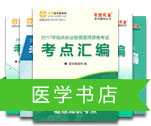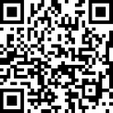| ADMINISTERING MEDICATION THROUGH A FEEDING TUBE | 鼻饲给药法 |
| Assessment | 评估 |
1. Assess for any contraindications to client receiving oral medication.
2. Assess client's medical history, history of allergies, medication history, and diet history.
3. Gather and review assessment and laboratory data that may influence drug administration. | 1. 病人口服药物禁忌。
2. 病人医疗史、过敏史、用药史与饮食史。
3. 收集和复查可能影响给药的评估及实验室资料。 |
| Implementation | |
1. Use Standard Protocol. 2. Elevate head of bed to high Fowler's position, at least 30 degrees, or place in reverse Trendelenburg if spinal injury present.
3. Prepare medication for instillation in feeding tube. | 1. 使用标准仪式
2. 将床头抬高到高弗氏位(至少30度),如有椎骨损伤,则将病人置反向特伦伯氏位。
3. 鼻饲管备药。 |
| A. Review five "rights" for administration of medication. Nurse Alert: Verify that medications do not include sublingual, enter- coated, or sustained-release medications.Medication may be available in liquid form. | A. 药物“五对”。
注意:确认药物为非舌下药、肠衣片、或缓释药。
药物为液剂。 |
B. Tablets: Crush pill (in its package if possible) with pill crusher. Dissolve the powder in 15 to 30 ml warm water.
C. Capsules: Open and dissolve the powder in 15 to 30 ml warm water. | B. 片剂:用碎药机压碎药片(或压碎于药品包装内),用15-30ml温水溶解药物。
C. 胶囊:打开胶囊,用15-30ml温水溶解药粉。 |
| D. Gelatin capsules: Aspirate with a syringe, or capsule may be dissolved in warm water over several minutes. After capsule dissolves, remove its gelatin outer layer. | D. 凝胶胶囊:用注射器抽吸,或用温水溶解胶囊。待胶囊溶解后,除去凝胶外层。 |
4. Check placement of feeding tube.
5. Aspirate stomach contents for residual volume, determine volume with graduated container if necessary, and reinstill to client. | 4. 检查饲管放置。
5. 抽吸胃内容物检查剩余气量。必要时可用刻度容器确定其容积。注入胃内容物。 |
6. Pour dissolved medication into syringe and allow to flow by gravity into feeding tube. Flush with 10 ml water after each medication.
7. Follow medication with 30 to 60 ml of water to flush tube of medications. | 6. 将溶解后药物倒入注射器,自由流入饲管。每次给药后即用10ml水冲洗。
7. 给药后用30-60ml水冲洗给药管。 |
| 8. Use Completion Protocol. | 8. 使用完成仪式。 |
| Evaluation | 评价 |
1. Observe for desired effects within appropriate time frame, depending on medication administered.
2. Verify tube patency before and after medication administration. | 1. 根据药物特性,按时观察预期效果。
2. 给药前后确认饲管畅通。 |
| Identify Unexpected Outcomes and Nursing Interventions Record and Report | 确认意外结果及护理措施记录和报告 |
1. Placement of NG tube.
2. Characteristics of stomach aspirate.
3. Medication administration.
4. Client's response. | 1. 鼻胃管放置。
2. 胃抽吸物特征。
3. 给药。
4. 病人反应。 |










 扫一扫立即下载
扫一扫立即下载


